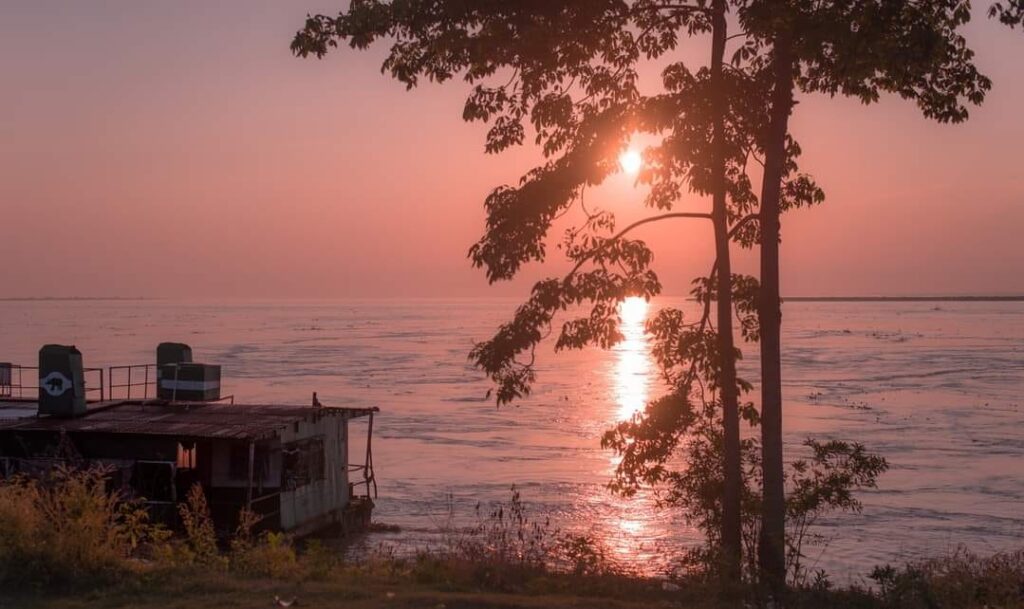The Brahmaputra River, an awe-inspiring natural wonder, flows through the heart of Asia, traversing multiple countries and captivating the imagination of all who encounter its majestic presence. In this article, we embark on a journey to explore the scenic beauty, rich biodiversity, and cultural significance of the Brahmaputra River. Let’s delve into the captivating allure of this mighty waterway that has shaped the lives of millions of people.
Table of Contents
The Brahmaputra River: A Geological Marvel
Unveiling the Origins
The Brahmaputra River originates from the Angsi Glacier in the Himalayas, at an altitude of approximately 5,000 meters above sea level. It begins its journey as the Yarlung Tsangpo River in southwestern Tibet. As it meanders through the breathtaking landscapes, it gains momentum, carving its path with remarkable force and grace.
An Epic Course
Flowing eastward, the Brahmaputra River enters India, where it navigates through the enchanting state of Arunachal Pradesh. Its course takes it through deep gorges, lush valleys, and cascading waterfalls, creating a visual spectacle that leaves onlookers in awe. The river then journeys onward, embracing the northeastern states of Assam and Meghalaya, bringing life and vitality to the fertile plains it touches.
A Fusion of Waters
At the point where the Brahmaputra meets the Ganges and Meghna rivers in Bangladesh, a grand convergence occurs, forming the largest delta in the world—the Ganges-Brahmaputra Delta. This delta, often referred to as the Sunderbans, is a UNESCO World Heritage Site and serves as a sanctuary for numerous plant and animal species.

Biodiversity and Ecological Significance
The Brahmaputra River sustains an incredible variety of flora and fauna, making it a hotspot of biodiversity. From vibrant orchids to the endangered Indian rhinoceros, the region surrounding the river is teeming with life. The river’s waters support an abundance of fish species, including the famous golden mahseer, attracting fishing enthusiasts from around the globe.
Cultural and Historical Significance
The Lifeline of Communities
For centuries, the Brahmaputra River has served as a lifeline for the people dwelling along its banks. The river provides fertile soil for agriculture and facilitates trade and transportation, connecting remote villages and bustling cities. The communities that thrive on its shores have developed a deep-rooted bond with the river, incorporating it into their daily lives and cultural practices.
Spiritual Essence
The Brahmaputra River holds immense spiritual significance for many. It is considered sacred by Hindus, who believe that a dip in its holy waters cleanses the soul of sins. The river also plays a vital role in various religious rituals and festivals, attracting pilgrims and devotees year-round.
Sustainable Development and Conservation Efforts
As the world recognizes the ecological and cultural value of the Brahmaputra River, initiatives for sustainable development and conservation have gained momentum. Governments, organizations, and local communities are actively working together to safeguard the river’s pristine beauty and fragile ecosystem. Efforts include afforestation projects, wildlife conservation programs, and promoting responsible tourism.
Conclusion
The Brahmaputra River stands as a testament to the magnificence of nature, captivating all who witness its grandeur. From its humble beginnings in the Himalayas to the vast delta it forms, this mighty waterway weaves together landscapes, cultures, and lives. Let us cherish and preserve the Brahmaputra River for future generations, ensuring that its awe-inspiring beauty remains a source of wonder and inspiration for all.
Wanna know more about Brahmaputra River ? Visit Brahmaputra
For more articles visit @Assam Story